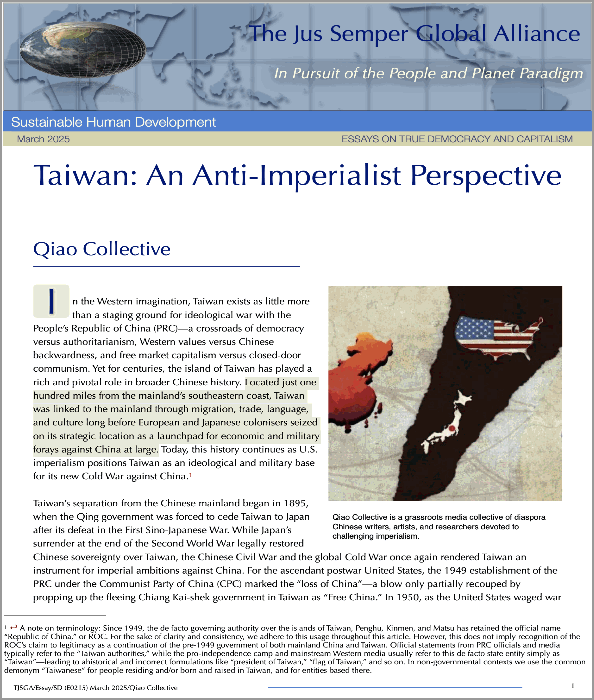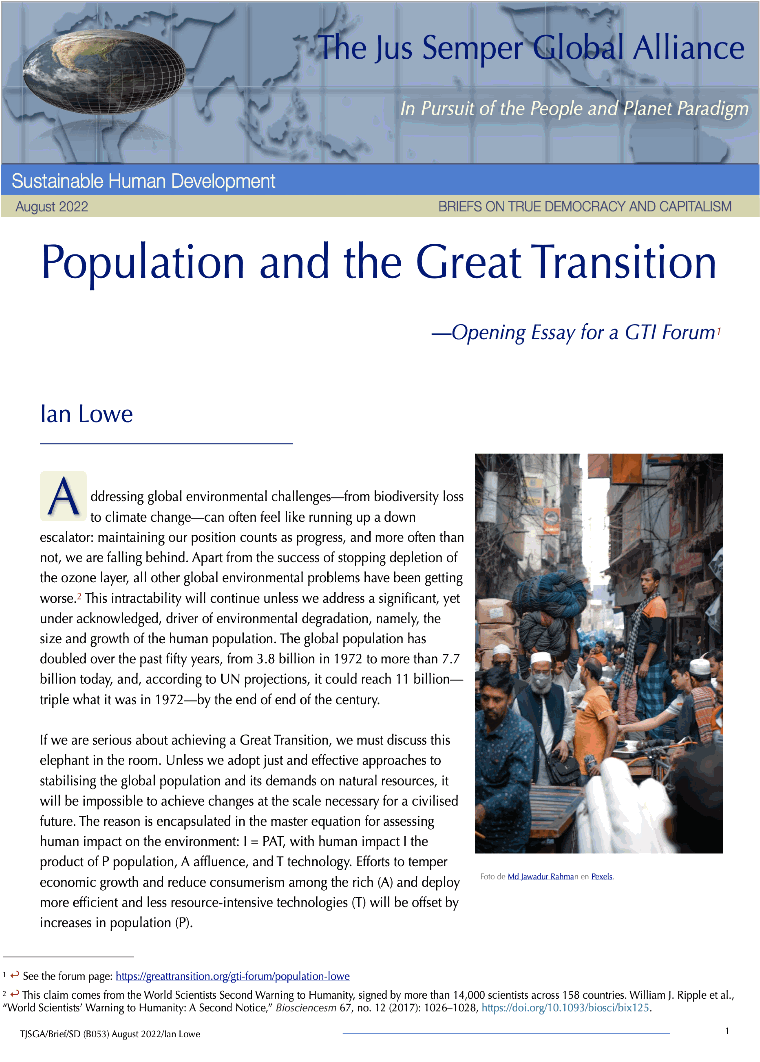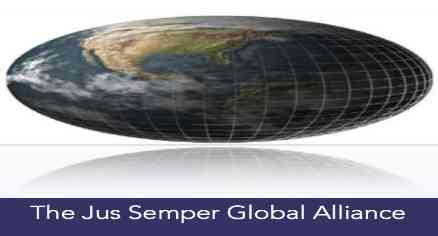Population and the Great Transition
Ian Lowe
Addressing global environmental challenges—from biodiversity loss to climate change—can often feel like running up a down escalator: maintaining our position counts as progress, and more often than not, we are falling behind. Apart from the success of stopping depletion of the ozone layer, all other global environmental problems have been getting worse. This intractability will continue unless we address a significant, yet under acknowledged, driver of environmental degradation, namely, the size and growth of the human population. The global population has doubled over the past fifty years, from 3.8 billion in 1972 to more than 7.7 billion today, and, according to UN projections, it could reach 11 billion—triple what it was in 1972—by the end of end of the century.
If we are serious about achieving a Great Transition, we must discuss this elephant in the room. Unless we adopt just and effective approaches to stabilising the global population and its demands on natural resources, it will be impossible to achieve changes at the scale necessary for a civilised future.
For a full review of this essay, click here or on the picture to download the pdf file. |






